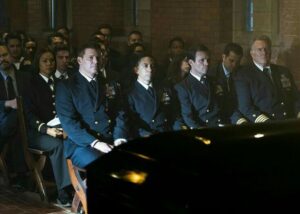
Richard Marcinko, First Commanding Officer of SEAL Team Six, Has Died
Richard Marcinko, the first commanding officer of SEAL Team Six and a trailblazer in the world of U.S. special operations, has passed away. His death marks the end of an era for the U.S. Navy SEALs, as Marcinko played a crucial role in shaping the elite fighting force into what it is today. With his passing, the special forces community reflects on his unparalleled contributions to the military, his controversial career, and his lasting legacy.
This article will take a closer look at Richard Marcinko’s life, his career with the Navy SEALs, and the incredible impact he had on the development of SEAL Team Six, one of the world’s most elite counterterrorism units.
The Life and Legacy of Richard Marcinko
Richard Marcinko was born on November 21, 1940, in Lansford, Pennsylvania. He enlisted in the U.S. Navy in 1958, quickly rising through the ranks to become one of the most prominent and influential figures in the history of Navy Special Warfare. Marcinko’s life and career were marked by both extraordinary achievements and significant controversy, but there’s no question that he changed the landscape of special operations in America.
Early Life and Navy Career
Marcinko’s journey into special forces began in the early 1960s when he enlisted in the U.S. Navy. His initial training took him to the Vietnam War, where he served as a combat veteran and was awarded several commendations for his actions. It was during these years that Marcinko honed his skills and began building a reputation for himself as a skilled operator, both in terms of combat and leadership.

But it wasn’t until the late 1970s that Marcinko’s true impact began to be felt. The U.S. military had been searching for ways to enhance its counterterrorism capabilities, and in 1980, after the failed Iranian hostage rescue mission, the need for an elite counterterrorism unit became glaringly obvious. This led to the creation of SEAL Team Six.
The Creation of SEAL Team Six
In 1980, the U.S. Navy set out to form a new, specialized SEAL unit focused on counterterrorism operations. This unit would be tasked with some of the most high-risk, high-profile missions in the world, targeting terrorist cells, hostage situations, and other threats requiring elite training and precision.
Marcinko was chosen to command this new team, largely due to his proven leadership and his experience as a combat veteran. He was given the responsibility of assembling a team that would eventually become known as SEAL Team Six (DEVGRU – the United States Naval Special Warfare Development Group).
Marcinko’s leadership style was intense, uncompromising, and highly demanding. He insisted on the highest levels of fitness, mental toughness, and discipline. He selected the best and the brightest from the SEAL teams and trained them rigorously in a variety of specialized skills—everything from hostage rescue to sabotage and intelligence gathering.
While Marcinko’s approach was tough and sometimes controversial, it transformed SEAL Team Six into the most formidable special operations unit in the world. His leadership and vision set the stage for the unit’s success in subsequent decades, especially in counterterrorism operations during the Global War on Terror.
Marcinko’s Command of SEAL Team Six: Achievements and Controversies
Marcinko served as the commanding officer of SEAL Team Six from 1980 until 1983, when he was relieved of his command due to issues related to his leadership style and several controversial incidents. During his tenure, Marcinko oversaw the development of the unit’s training and operational procedures, ensuring that the SEALs were prepared for any mission, no matter how dangerous.
One of Marcinko’s notable achievements was his ability to create a team that was highly specialized and incredibly effective in counterterrorism operations. He also helped solidify SEAL Team Six’s reputation for conducting high-risk operations with surgical precision, a reputation that would later be showcased in some of the unit’s most well-known missions, including the successful operation to kill Osama bin Laden in 2011.
However, Marcinko’s tenure was also marked by controversy. His no-nonsense approach to leadership was criticized by some in the military for being excessively harsh. Furthermore, Marcinko’s tendency to bend or break the rules of engagement sometimes led to friction with other military branches and government agencies. His methods were often seen as unorthodox, and at times, his actions raised questions about ethics and accountability.
Despite the controversies, Marcinko’s time leading SEAL Team Six was transformative. He laid the foundation for the team’s continued success, even after his departure from active command.
Marcinko’s Post-SEAL Team Six Career
After being relieved of his command in 1983, Marcinko was assigned to various other military roles, but his time in SEAL Team Six remained the pinnacle of his career. Following his retirement from the Navy in 1989, Marcinko entered the private sector, where he became a vocal advocate for military readiness and special operations.
Marcinko authored several books, including “Rogue Warrior,” an autobiography that provided readers with a glimpse into the secretive world of Navy SEALs. The book was both a critical success and a lightning rod for controversy due to Marcinko’s candid accounts of his time in the military. In “Rogue Warrior,” Marcinko detailed the inner workings of SEAL Team Six, his leadership challenges, and his thoughts on U.S. military operations. The book was a bestseller and cemented Marcinko’s reputation as a maverick, but also sparked debate about his controversial actions and statements.
In addition to writing, Marcinko also worked as a consultant, advising on military tactics and strategies, as well as speaking at various events about leadership, perseverance, and the need for a strong military.
Richard Marcinko’s Influence on SEAL Team Six and Modern Special Operations
Marcinko’s legacy is deeply intertwined with the history and development of SEAL Team Six. His emphasis on tough training, precision, and the ability to adapt to any environment helped mold SEAL Team Six into the highly effective force it is today. Even though Marcinko left the command of SEAL Team Six after a few short years, his influence continued to shape the team’s operations for decades to come.
Under Marcinko’s leadership, SEAL Team Six became a symbol of elite military capability, and the team has since been involved in some of the most high-profile counterterrorism operations in history. Operations like the raid that killed Osama bin Laden in 2011 and the rescue of Captain Richard Phillips from Somali pirates in 2009 are just a few examples of SEAL Team Six’s effectiveness on the world stage.
Marcinko’s personal mantra, “No such thing as a fair fight,” encapsulated his approach to special operations—prepare for the unexpected, and always be ready to outthink and outmaneuver the enemy. This mindset, instilled in SEAL Team Six during Marcinko’s time at the helm, remains a core philosophy of the unit to this day.
Remembering Richard Marcinko: A Complex and Unforgettable Figure
Richard Marcinko’s passing represents the end of an era for the U.S. Navy SEALs and the broader special operations community. He was a man of contradictions: tough yet charismatic, disciplined yet often seen as a rule-breaker, and always willing to take risks for the greater good. While his leadership style may have been polarizing, there’s no doubt that he reshaped the way the U.S. military approached counterterrorism and special operations.
Marcinko’s legacy is one of innovation, courage, and unwavering commitment to excellence. He will be remembered as the man who helped establish SEAL Team Six as the world’s preeminent counterterrorism force—a force that continues to carry out high-stakes missions in some of the most dangerous places on Earth.
The End of an Era: What Marcinko’s Death Means for the Navy SEAL Community
Richard Marcinko’s death marks the closing of a chapter in the history of the U.S. Navy SEALs. His contributions to the unit and the special operations community cannot be overstated. As the first commanding officer of SEAL Team Six, he laid the foundation for a force that would go on to tackle some of the most dangerous missions in military history.
For the Navy SEAL community, Marcinko’s passing is a moment of reflection. His pioneering work in creating SEAL Team Six is a legacy that will continue to shape the team for years to come. As the military world adjusts to this loss, Marcinko’s story remains an essential part of the narrative of U.S. special operations.
